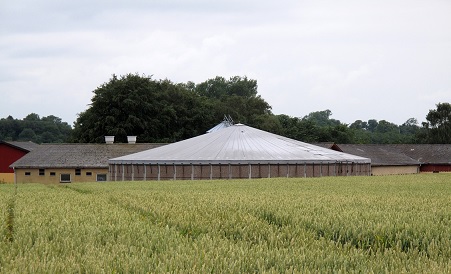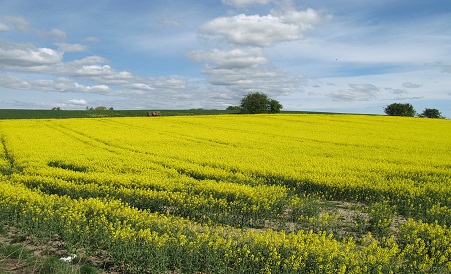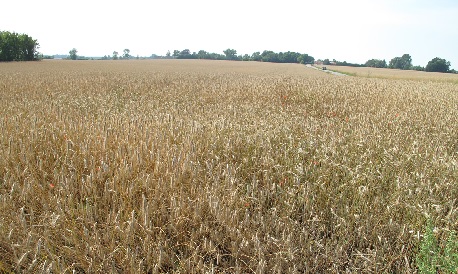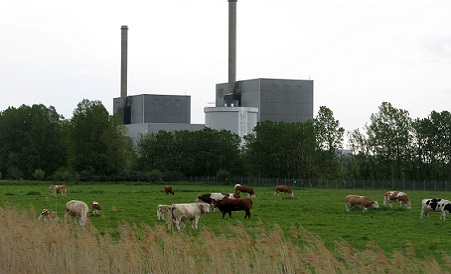Policy briefs for end-users
5 Policy briefs have been produced in BONUS GO4BALTIC Coherent policies and governance of the Baltic Sea Ecosystems.
The policy briefs outline key results from the project, relevant for decision makers and stakeholders in the Baltic Sea Region and EU.
Policy brief No.1 (deliverable 2.3):

Policy Brief on implementation, innovation and cost-effectiveness with the title:
HOW CAN AGRICULTURAL NUTRIENT POLICIES FOSTER TECHNOLOGY INNOVATION AND ADOPTION?
Abstract:
Technological innovations may have the potential to lower the costs of reducing nutrient loads to the Baltic Sea and/or increase the potential for nutrient reductions. In this context three important questions are answered:
(1) Do current policies and markets provide sufficient incentives for innovation?
(2) If not, how can the incentives be improved?
(3) Will the novel technologies be adopted by the intended users? We recommend that emission performance standards are set for larger farms in order to encourage innovative activity.
For large farms we suggest to replace the current EU and national regulations for agri-environmental measures, based on compensation of farmers’ costs for using specific technologies, by performance standards that allows farmers to apply novel technologies.
We also recommend to provide the public and private sector with direct, competitive rewards for technological development and eco-innovations that are promising in delivering economically and environmentally effective nutrient abatement.
Finally we recommend to provide farmers with differentiated incentives for technology adoption by mandatory abatement technologies targeted to regions not only based on environmental sensitivity but also focusing on low-cost regions and low-cost farm types.
Information campaigns on subsidies to voluntary technology adoption should be targeted to farm types with lower costs of adoption
Policy brief No.2 (Deliverable 4.2):
Policy brief coherence climate and aquatic policies with the title:
CLIMATE AND WATER CHALLENGES OF LIVESTOCK PRODUCTION.
Abstract:
Water pollution and Greenhouse Gas (GHG) emissions from livestock production are gaining increasing political attention. Nutrient loads from dairy production represents a persistent problem in the Baltic Sea region.
GHG emissions from livestock production make a considerable contribution to global warming, and this has led to a heated debate on the need to reduce livestock production. Seen from a policy perspective, measures to effectively reduce water pollution due do livestock production related nutrient loading exists.
In contrast, the possibilities to reduce livestock related GHG emissions are currently limited – the only real option being to reduce the number of productive animals. Livestock production is facing great challenges.
Policy brief No.3 (Deliverable 3.5):

Policy brief describing coherence agricultural and environmental policies with the title:
STRUCTURAL CHANGE AND MANURE MANAGEMENT
Abstract:
Structural change of livestock production changes the needs for efficient manure management. Larger animal quantities at fewer farms means that manure nutrients are being concentrated in fewer locations.
If efficient utilization of manure nutrients in crop production is to be achieved, manure needs to be hauled to more distant locations. This sets new pressure on regulatory frameworks and creates new perspectives for technological development. In this policy brief, we present estimates of structural change in the coming decades, and discuss the implications for manure nutrients.
We characterize the past and estimate future development of poultry, pig and bovine production in the Baltic Sea region, and quantify the effects of the development on manure nutrients.
Policy brief No.4 (deliverable 1.6):

Policy brief describing CAPRI results and cost-effectiveness results with the title:
MANURE HANDLING AND EUTROPHICATION IN THE BALTIC SEA
Abstract:
Improved handling of manure, including storage, improved spreading equipment and timing, have potential to reduce nitrogen surplus from agriculture around the Baltic Sea, and to reduce the nitrogen loads to the Baltic Sea Basins.
The effects from the nitrogen load reductions are more modest when it comes to the resulting changes in Dissolved Nitrogen during winter, but effects can be seen in Gulf of Riga and the Bothnian Bay. The simulations are performed by integrating an agricultural sector model CAPRI, a model for the changes in leaching and nitrogen transport and the loads to the sea, and finally the marine model BALTSEM.
The findings might be relevant for update of the Baltic Sea Action Plan and the revisions of the EU common agricultural policy (CAP).
Policy brief No.5 (deliverable 5.7.)

Policy brief describing a synthesis on the socioeconomic Baltic Sea Action plan with the title:
TOWARDS A SOCIOECONOMIC ACTION PLAN FOR THE BALTIC SEA COST-EFFECTIVE ACHIEVEMENT OF GOOD WATER QUALITY IN THE BALTIC SEA
Abstract:
There is an increasing gap between the state-of-the-art policy alternatives, studied and recommended by the research community, and the existing mix of command-and-control-based approaches and voluntary mechanisms that are used to regulate nutrient loads to the Baltic Sea.
It is time to evaluate the socio-economic design of the existing nutrient policies, and develop it to the same level of sophistication as the ecological foundations of the HELCOM Baltic Sea Action Plan (BSAP). The nutrient load reduction targets required by the BSAP (HELCOM 2007, 2013) are based on innovative ecological modeling of the Baltic Sea environment.
The implementation of the objectives and requirements in the BSAP are supported by national regulations and action plans in the countries adjacent to the Baltic Sea. The plan has had impact on the Baltic Sea environment, but targets have not been met, and costs have been unnecessarily high.